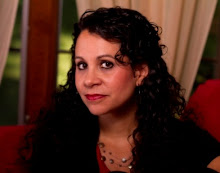This method goes from large to small.
Go through your manuscript and write one sentence for each scene. If the scene is long, write a couple sentences.
Include all major plot points, red herrings, symbolism, etc.
Don’t just include the plot. If there are any major spiritual or emotional conflicts in the scene, include them. But be brief—don’t go into convoluted explanations.
If there’s any vital backstory, include it. However, be ruthless about what you don’t include.
That’s it. Go through your entire manuscript. This should give you a synopsis of about 6-10 pages single-spaced.
From here, you cut your synopsis down to whatever length it needs to be.
A synopsis is pure telling, so don’t think too much about good sentence structure or strong verbs or lack of –ly adverbs. Just write it. You can tighten the prose later, and even then, you don’t want your synopsis to sound too melodramatic. Keep it simple.
Another quick tip for how to write a synopsis in case you wanted to go from small to large.
Randy Ingermanson has a famous (or infamous) “Snowflake” method of plotting that I use to write synopses.
Now don’t have a coronary. It’s actually very easy, and I only use a couple of the 10 steps in the Snowflake method.
I read step one but I don’t necessarily do it: Write a one-sentences summary of your story. About 15 words, mentioning both the big picture and the personal picture.
Then I do step two: Expand that sentence into a paragraph, about 5 sentences.
Then I skip to step four: Expand each sentence from the paragraph summary into a paragraph each.
That’s it. I end up with a one or two page synopsis.
For a longer synopsis, I do step six: Expand each paragraph of the one-page synopsis into a page each.
Doing step six gives me a synopsis anywhere from 4-11 pages.
 Camy Tang lives in San Jose, California. She previously worked in biology research, and she is a staff worker for her church youth group. She runs the Story Sensei critique service, and her Asian chick-lit novel will be released in September 2007.
Camy Tang lives in San Jose, California. She previously worked in biology research, and she is a staff worker for her church youth group. She runs the Story Sensei critique service, and her Asian chick-lit novel will be released in September 2007.Everyone who leaves a comment receives a 10% off coupon for Camy's Story Sensei critique service (coupons cannot be combined)! Please leave an e-mail address so she can send you your coupon (use this format: you [at] yourmail.com)

2 comments:
What fantastic tips! I once put a brief summary for each scene/chapter in a spreadsheet as I wrote, and this proved invaluable both for writing a long synopsis and for keeping critique group members up to date if they missed a meeting.
The short synopsis is the one that makes me want to weep and start tearing my clothing. But no more! (This will likely be helpful, too, for those query letter blurbs.)
Thank you!
Too late... had a coronary.
15 words?
No, I won't start, I'll only have another coronary...
Post a Comment